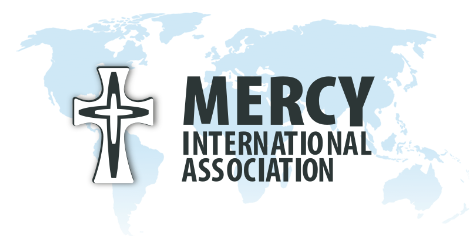Facilitators Guide: Mercy and the Degradation of Earth
Guiding Group
The Facilitators Guide offers three of many possible approaches to using these resources and may be of interest to individuals as well as groups.
)
The role of the Facilitator will necessarily include organising the group’s access at the session to the resources on screen or in print.
A suggested structure for each Session is:
- Preparation of the Focus Space
- Prayer
- Introduction
- Content Explored
- Reflection and Discussion
- Closing
As this is the second theme of the second Segment, most groups will have already met for one or more sessions and so will be familiar with the process and the microsite.
Whichever presentation you, the Facilitator, or group first choose to engage with, commence your work with the theme using the Introduction by Elizabeth Davis rsm. This reviews last month's theme 'Faith Traditions and Mercy', highlights the events around us: the Synod on the Amazon, Earth Day and Laudato Si' Week —for which you will find resources on our website and in the Good Reading guide —and speaks to the Pandemic before addressing this month's theme 'Mercy and the Degradation of Earth'. The relationship between our global process and the Pandemic is also addressed by Sr Elizabeth in the already published document 'Mercy Global Presence: Gift in This Troubling Time of COVID-19'. That document can be read/downloaded here in both English and Spanish.
In her introduction to this month's theme Sr Elizabeth asks 'To What is Mercy Calling Us?' Her question is in three parts:
'When do we answer Mercy's call?'
'How do we answer Mercy's call?'
'What do we answer in Response to Mercy's call?'
This set of questions, designed for use with the Introduction, could well be used as review questions at the end of the thematic exploration.
A number of the presenters make reference to or quote from Laudato Si'. Laudato Si' was released at the time of the Mercy International Reflection Process (MIRP), precursor of this process, and was a principal text for it. At that time we gathered Readers Guides, Videos, Recordings, Commentaries and Articles on Laudato Si'. These resources can be accessed in our library here. One of the outcomes of MIRP was the focus on two often intersecting themes: (i) displacement of persons and degradation of Earth. Examples of how Mercy has addressed these themes since can be found here.
In addition, if you have not already engaged with the theme 'Earth and Integral Ecology' from Segment One, you might like to explore those presentations or the resources in that theme's Good Reading.
We are fortunate to have an additional contributor this month, Jenni Grove. Jenni, like Mary Bilderback rsm, is a biologist. Sr Mary's presentation is an illustrated lyrical essay while Dr Jenny's is a powerpoint. It can be accessed here.
Once again we offer three of many possible approaches to using resources from the theme Mercy and the Degradation of Earth implementing the suggested structure (nos. 1-6). The approach used will depend on the needs, interests, abilities and situations of the group members. At this present time groups that are able to meet are using video conferencing. Our suggested approaches take account of this and of face-to-face-meetings becoming possible again in the future.
Facilitators may, of course, use their own approach with the resources, or choose elements from these three suggested approaches to create a different approach. At the conclusion of the Session the Facilitator or another group member is encouraged to send on ‘what is too good for the group to keep to themselves’ to mgpfeedback@mercyinternational.ie
Spanish translation using DeepL Translator. Traducción al español con DeepL Translator


)
)
)